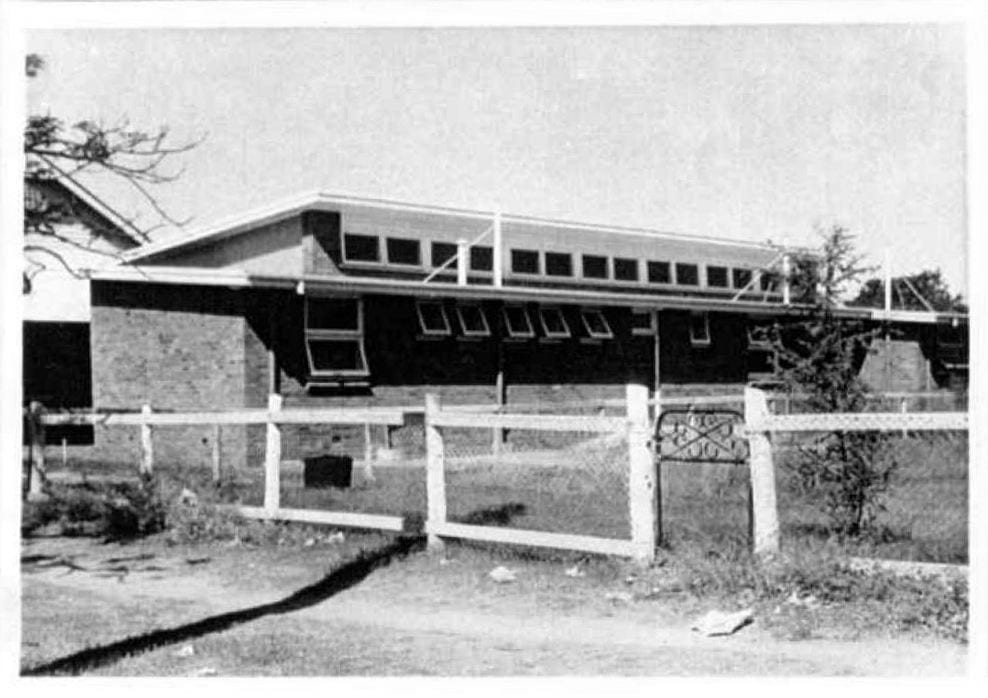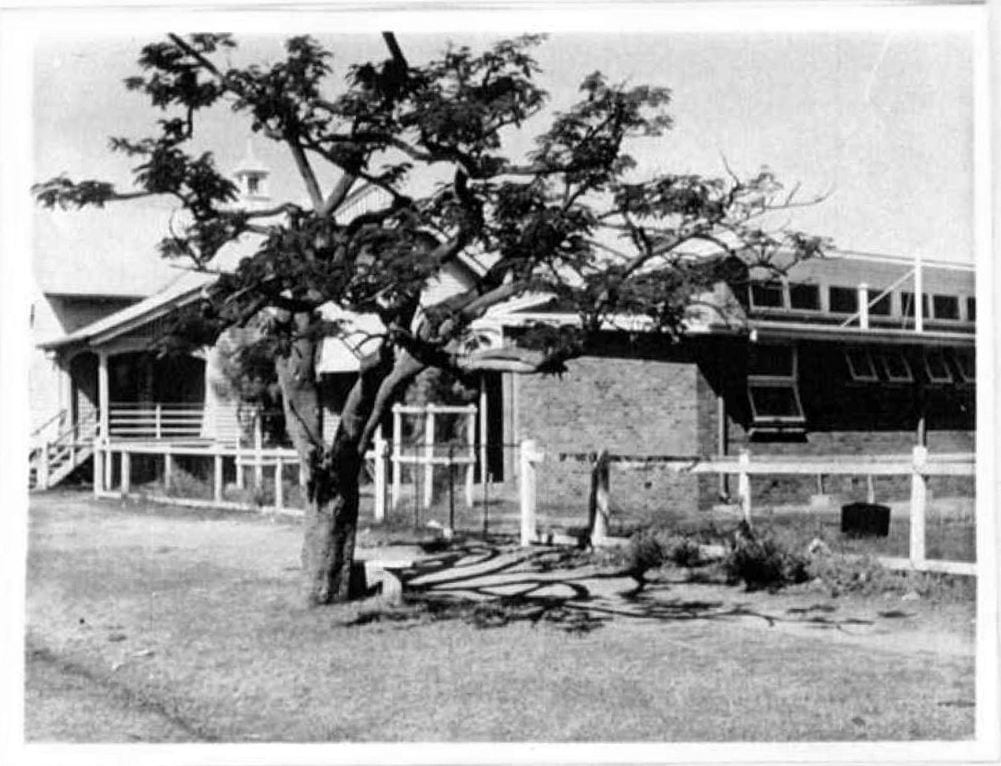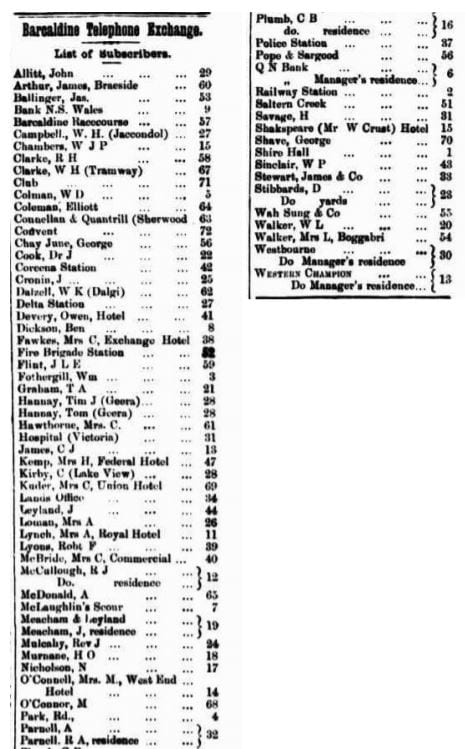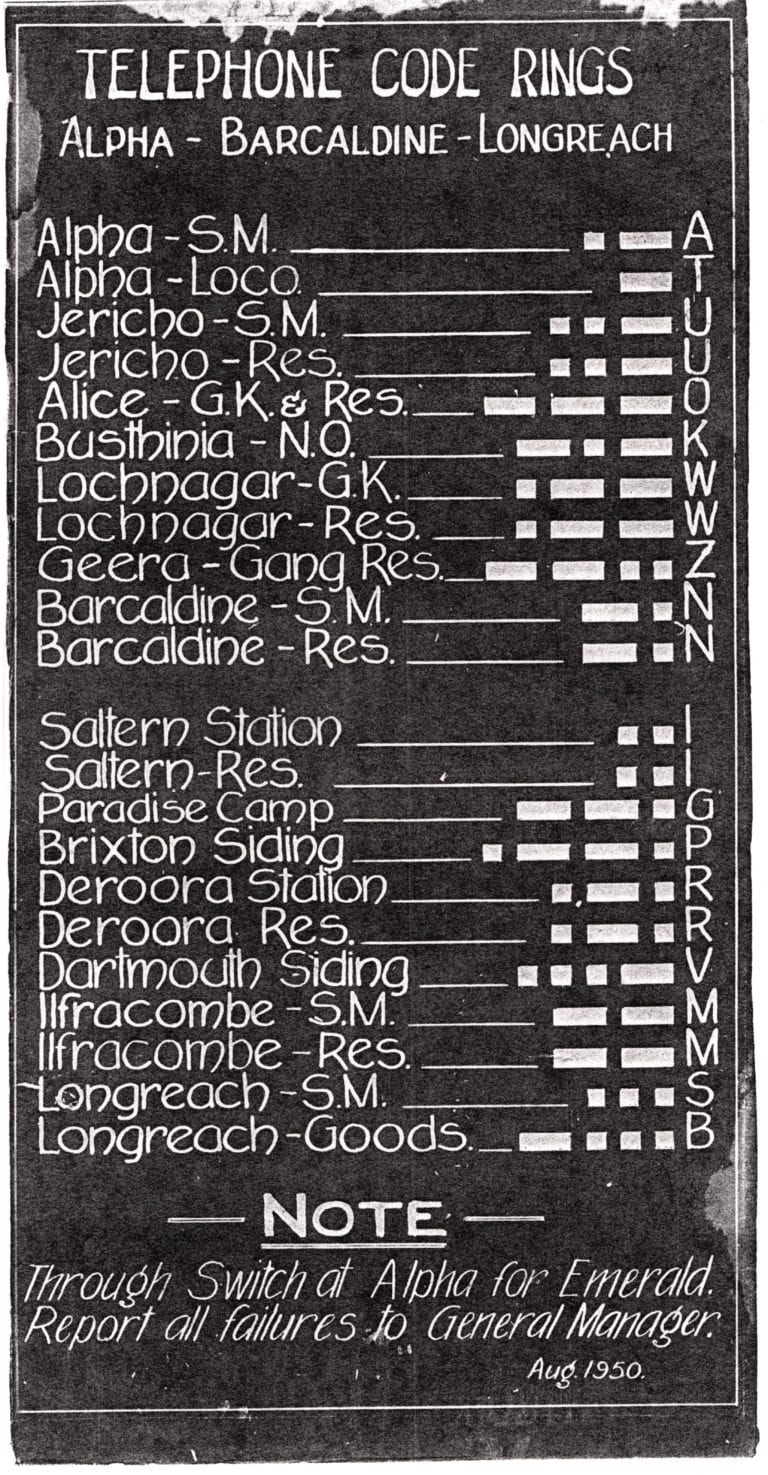Telephone
Communication by telephone meant gradual changes in life style in Barcaldine and surrounding districts. The Barcaldine Chamber of Commerce met on the 6th August 1907 to consider a proposal to establish a telephone exchange. It resolved to:
send circulars to probable subscribers, setting forth the annual cost; which would be £4; with a guarantee of three years’ service. A canvass was directed to be made of the town, and if fifteen subscribers were secured, to at at once apply for the establishment of the exchange.
By 1909, plans were well advanced and the opening of the Barcaldine Telephone Exchange was imminent.
The telephone exchange has not been officially opened yet ; but through the courtesy of the Post Office officials it is being used a little. It is probable that the exchange will be declared open within a week, and before the year expires a trunk service to Longreach, Ilfracombe, Jericho, and Blackall will be opened. A movement is on foot to extend the system to Aramac. (Western Champion, 4 December 1909)
There were 45 subscribers to Barcaldine telephone exchange by November 1910 and the Western Champion printed instructions on how to use the new amenity:
Do not ring in response. Lift handset and speak naturally.
Views of Telephone Exchange 1958







In 1926, two telephone cabinets were erected outside the post office, part of a new telephone exchange which had 190 subscribers. The cabinets could be used after hours if the cost was paid to the operator through a sliding panel in the post office wall (Hoch, 2008, p.83).
Automatic telephones and Mobile phones
Over the years, the district kept up with the advance of technology. Greater ease of communication, especially for country people, came with the introduction of two way radios in the 1980s, and mobile phones in the 1990s.
In August 1983 about 500 telephone subscribers received automatic phones. Some country properties still needed manual assistance for outgoing calls in 1985.
Prior to 1983 the manual exchange at Barcaldine employed nine full time staff, a supervisor and a part time worker but there were made redundant by the change, and manual assistance came from Longreach.
Mobile phone coverage was unreliable but improved over time.
Computers and Internet
Computers were introduced into the Council in 1984 and updated in 1990. The next decade saw rapid increase in use and understanding of computers and the internet, and both became increasingly more generally used.
In October 1993, the Australian Workers’ Heritage Centre had set up an on-site training facility with Pat Ritchie as Co-ordinator. In addition, a TAFE campus was opened in 1994 to deliver courses with Estelle Egerton as Co-ordinator, moving eventually into the old Westpac Bank building when it closed. The TAFE campus closed with the merger of CQ TAFE with CQU and when Ms Egerton retired.
